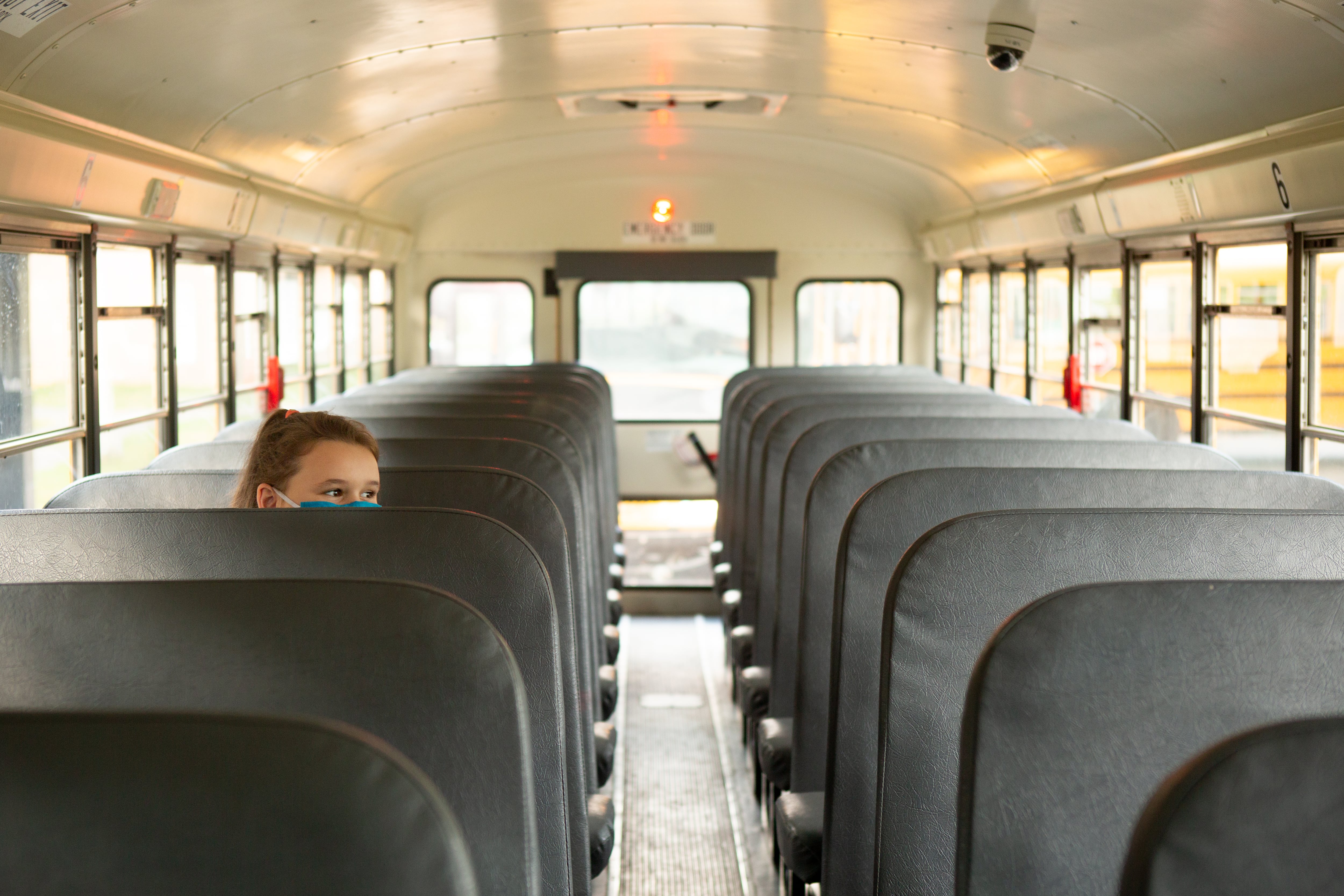To trim from $5 million to $7 million in transportation next school year, Indianapolis Public Schools is proposing to cut busing for over 2,000 students who can walk to school and for over 600 other high school students.
While significant, the cut to transportation is less than half what the district was sketching out in January, as it sought to lower operating costs amid steadily shrinking enrollment and a severe budget crunch.
Ending district-provided busing for over 2,000 students who live within 1 to 1.5 miles from school will save up to about $3 million, district officials said. Shifting 605 high school students from district buses to IndyGo passes will save about $1 million more. Those students have a one-way trip of less than 50 minutes, a less than 0.7 mile walk to school, and no transfers if they take the city bus. The district plans to continue to move high school students to using IndyGo in the next couple of years.
The proposed cut is a step toward reducing the district’s budget by $328 million over several years. That gap stems from a deal forged in 2018, when IPS reduced its request to raise taxes, falling more than two-thirds short of its supplemental revenue goal. Voters approved two referendums totaling $272 million for teacher pay and building improvements, but not enough to cover needs.
Besides cutting transportation, Indianapolis Public Schools is considering closing schools, limiting staff raises, and trimming employee benefit costs in the coming years.
Even receiving more than an estimated $260 million in three federal stimulus packages for COVID relief, the Indianapolis district predicts an $18 million shortfall next school year.
This year, the district is receiving $15 million less in state funds than expected last spring because of falling enrollment partly related to the pandemic.
The district serving a large population of children in poverty also anticipates only a small increase in basic state funding per student as Indiana shifts toward equal rather than equitable funding of school districts.
In a January board retreat, district administrators identified a potential savings of more than $17 million in transportation, to align costs with those of peer districts in cities like Baltimore and Cleveland. Indianapolis spends up to twice as much than other districts do partially because it transports students to specialized schools around the city.
But Superintendent Aleesia Johnson said it was impossible to trim so much at once.
“This is the beginning and we’ll continue to look for ways to reduce expenditures to ensure we are more in line with our peers across other districts,” Johnson said.
The district also expects to save from $1 million to $2 million by changing routes and stops. IPS will also offer IndyGo passes to 2,100 other students who live less than a 60 minute walk from school.
District officials have defended the safety and practicality of their plan. IPS and IndyGo ran pilot programs over three years that indicated that high school students could take the city bus and the district could save money.
Still, many board members brought up safety concerns such as liability, if unsafe situations arise to and from school, and worries about students being abducted. District officials said all IndyGo bus drivers are trained to watch for signs of human trafficking and that every bus has cameras and GPS tracking.
Proposed state legislation that would eliminate plans for additional future metro bus lines would not affect students this year, but Johnson said the district is watching legislation carefully because it could impact the ability to transfer more students to IndyGo in the future.
In its next step, the district will communicate to impacted families and host a series of town hall meetings in April about transportation changes. Click here to find information about the time, date, and location of the town halls.
The board is scheduled to vote on the district’s transportation plan at its next action meeting April 29.
Correction: April 2, 2021: A previous version of this story said the district is identifying places to cut and resources to add revenue to help dig out of a $328 million hole of accumulated debt. The $328 million is not debt. It is the amount the Indy Chamber and IPS identified that the district would need to save or make up in new revenue over eight years.








